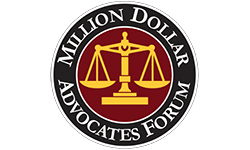Every day, irresponsible Maryland residents choose to drink and drive. This careless mistake has the potential to result in severe injury or even death. At Belsky & Horowitz, LLC, our Baltimore drunk driving accident lawyers strive to bring intoxicated drivers to justice for the sake of their victims. With over 20 years of experience advocating for victims of car accidents caused by negligent decisions like driving while intoxicated, we are prepared to fight for you.
Drunk Driving Laws in Maryland
According to the Maryland Department of Transportation, drivers over the age of 21 with a blood alcohol concentration (BAC) of 0.08 percent or higher are considered alcohol-impaired by law. On average, this equates to approximately four drinks; however, attributes like weight, sex, and food consumption all play a role.
For those under 21, the BAC limit is set a 0.02 percent. Commercial vehicle drivers are expected to be below 0.04 percent.
With a BAC of 0.08 percent, a person would be experiencing short-term memory loss, impaired perception and self-control, reduced ability to concentrate, and delayed reaction times. Even with these impairments, some individuals still choose to turn the key and drive off.
For a first DUI offense, a drunk driver in Maryland could potentially face the following consequences:
- Up to one year in jail
- Up to $1,000 in fines
- A minimum of six months license suspension
A second-time offender could face these consequences:
- Up to two years in jail
- Up to $2,000 in fines
- A one-year license suspension
- The installation of an Ignition Interlock Device
A third-time offender could face these consequences:
- Up to three years in jail
- Up to $3,000 in fines
- A minimum of 18 months license suspension
- The installation of an Ignition Interlock Device
An Ignition Interlock Device (IID) is a breath-test machine (breathalyzer) that is connected to a vehicle’s ignition system. Once installed, the vehicle will not start until someone breathes into the IID with no alcohol on their breath. Maryland began the Ignition Interlock Program in 1989, and currently has the sixth-highest number of ignition locks installed in the country. The idea is that the IID will prevent people from driving while alcohol is in their system.
These laws and consequences do not stop reckless people from drinking, driving, and causing devastating accidents. Our Maryland drunk driving attorneys will make sure the person responsible for your accident is held accountable, so you can focus on recovering physically and emotionally.
Drunk Driving Statistics in Maryland
- The Center for Disease Control and Prevention (CDC) reported that 1,716 people were killed in crashes involving a drunk driver in Maryland between 2003-2012.
- One out of every two drunk drivers were 21 to 39 years old.
- Drunk driving accident rates increase from 5:00 PM on and start to decline after 3 AM.
- Weekends and late evenings hours have the highest number of impaired crashes. Over 55 percent of alcohol-related crashes occurred on a Friday, Saturday, or Sunday.
- Alcohol-related crashes resulting in injury and death were the highest on Saturday and Sunday.
- Drunk driving crashes occur most often in metropolitan areas. In Maryland, nearly half of all impaired driving accidents occur in the Baltimore area.
- 1 percent of Maryland’s adult residents reported driving after drinking too much. The national average is 1.9 percent.
Who is Responsible for Drunk Driving Accidents?
Some states, per dram shop and social host laws, have the ability to place fault on the restaurants, bars, or hosts that served the drunk driver the alcohol when it was clear they were already intoxicated. Maryland legislators refuse to put laws similar to those in place.
Maryland does not allow third-party injury claims against alcohol vendors or social hosts after a drunk driving wreck.
Preventing Drunk Driving
Maryland’s Ignition Interlock Program strives to prevent drunk driving incidents and accidents. Certain drivers, as of October 1, 2016, are required to participate in the program because of the following convictions:
- Driving under the influence (DUI)
- Driving while impaired (DWI) while transporting a minor under the age of 16
- Driving while intoxicated with an initial breathalyzer test refusal
- Homicide or life-threatening injury by motor vehicle while DUI or DWI
While Maryland is taking steps to combat this deadly issue, you can also take steps to aid in the prevention of drunk driving:
- If you’re planning on going out, make sure you have a designated driver.
- If you don’t have a designated driver, use a ridesharing service like Uber or Lyft.
- Never pressure anyone to drink alcohol.
- If you’re throwing a party with alcohol, serve plenty of food and non-alcoholic
- Never serve alcohol to minors.
- If you suspect that a driver on the road is intoxicated and is swerving, driving on the wrong side of the road, braking erratically, or driving with their headlights off, pull over and notify law enforcement officers.
If you or a loved one was a victim of a car accident that involved a driver who was under the influence of alcohol, schedule a free consultation with our diligent Baltimore drunk driving accident lawyers. We can help you and your loved ones seek the compensation you deserve while holding the irresponsible party liable for their actions. Please contact us online or call 410-234-3992 or 800-895-5333.






